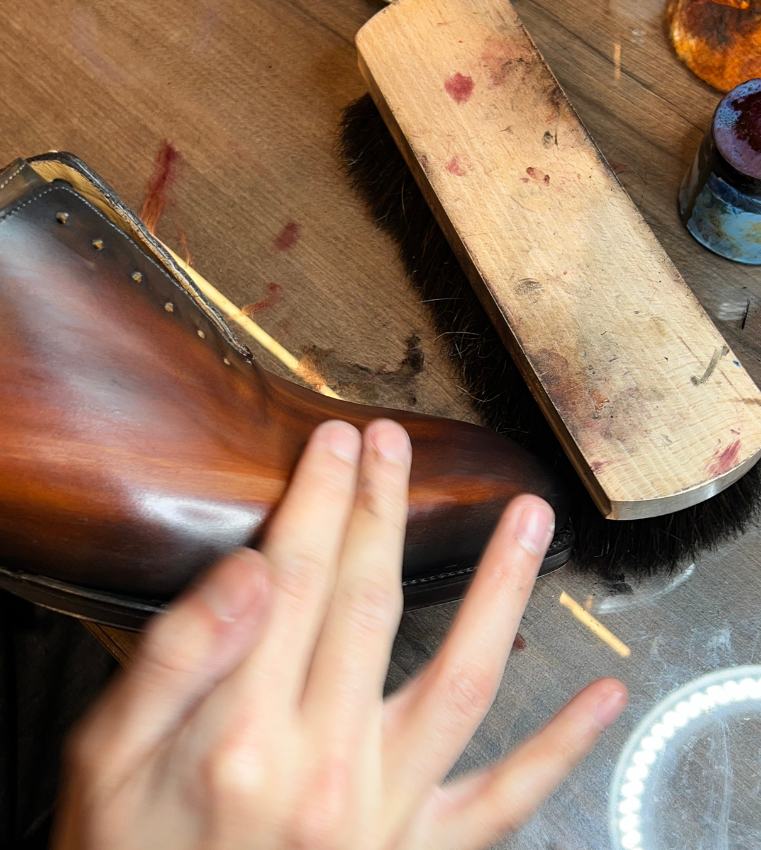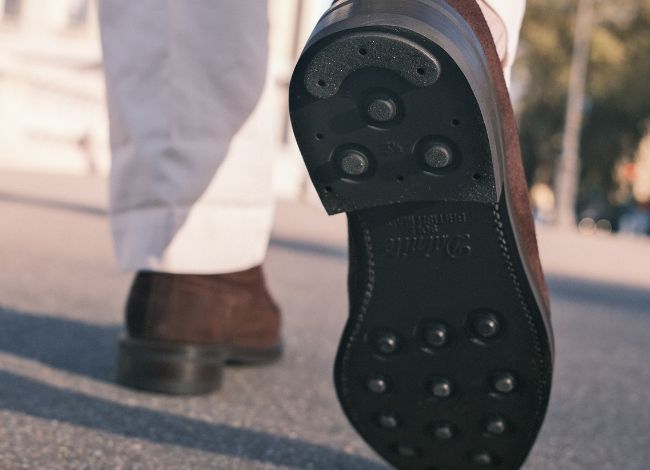In this article, we will explain in detail how to choose your size at Septième Largeur in order to maximize your chances of ordering the perfect size the first time!

You surely already know that it can be complicated to choose your shoe size simply because not all brands fit the same way: several lasts, several widths... It is even more difficult when you buy online. In this article, we will explain in detail how to choose your size at Septième Largeur in order to maximise your chances of ordering the perfect size on the first try!
There is nothing special about your foot!
Rest assured, your foot is probably not too wide or too thin. In fact, most of our customers tell us that they have very wide feet or very narrow feet, or that they wear orthopaedic inserts. It is therefore very likely that you have feet that are quite similar to others when averaged out.
Throughout this article, we will take each of these particularities mentioned just now in order to explain them.
OUR WAY OF FOOTWEAR
At Septième Largeur, we have an extensive range of shapes. Whether thin or wide, they have all been developed for very specific models in a search for comfort and aesthetic balance. They each have their own characteristics and therefore do not all fit the same way. Even if it's a bit of a shortcut, we can classify them into two families; so-called “thin” shapes and “wide” shapes.
Our different shapes

Important point: Like most of our colleagues in this industry, we work in UK sizes. For what ? Our shapes are developed using the English point as a metric system, i.e. 1 point = 8.47mm (which corresponds to 1/3 of an inch). Compared to the French point, also called Paris point, for which 1 point = 6.66mm. We will see these systems in more detail in the section “Find your size by measuring your foot”

FIND YOUR SIZE BASED ON OUR SHAPES

If you already have a reference from us, the choice will be simpler. Generally speaking, for your dress shoes, it will be appropriate to take half a size smaller for our wide shapes compared to our thin shapes (see Figure above). For our fine shapes, take your usual size for your dress shoes.
Among our models on fine shapes, we can count the Alexandre, the Gédéon, the Gatsby, the Miro, the Tobar, the Prosper, the Rennan Boots, the Ivy… Concerning the models on wide shapes: the Classic Moc, the Rennan, the Moissac, the Basile, the Anselme II, the Eugène, the Trima, the Anduze, the Smith, the Megève, the Soho, the Vadillo, the Nicodème…

FOCUS: Take your sneaker size as a basis for comparison
As stated above, we are talking here about correspondence between dress shoes. However, if you no longer take your dress shoes as a basis for comparison but your sneakers, the calculation is different. Indeed, we very regularly have customers who visit us in our stores thinking of making a 43 European and who ultimately leave with a 7UK (41 European).
Most of the time, it's because they calculate their sizes by referring to their sneaker purchases. It is more difficult to estimate your dress shoe size on this basis. However, in general, the rule is as follows: for our slim shapes, take a half size smaller and for our wide shapes, a full size smaller .
FIND YOUR SIZE BY COMPARING WITH OTHER HOUSES
If you have never worn our shoes but have a pair from one of our colleagues listed below, you can deduce your size from 7L. However, we would like to point out that these correspondences are approximations . These brands themselves work with different shapes which do not all fit the same way.

FIND YOUR SIZE BY MEASURING YOUR FOOT
In order to choose the right size, we advise you to measure your largest foot (if you know it) by respecting these different indications:
- Wear the type of socks you would normally wear with this type of shoe;
- Place your strongest foot on a flat surface, heel against a wall;
- Measure from the base of your heel to the tip of your longest toe (see Figure below);
- Refer to the correspondence table

Why the English point as a reference?
We owe the invention of shoe sizes to 18th century shoemakers. Their goal was then to harmonize the sizes. Indeed until then, each craftsman used his own system. To put an end to these differences, master shoemakers institute a unified point rating.
The English stitch is the custom among shoemakers in our sector: most of our assembly techniques have their origins in Great Britain. It is therefore above all cultural. Furthermore, the latter facilitates the manufacture of half sizes. In fact, there is 0.846cm of difference between two sizes unlike the Paris point for which there is only 0.66cm (which therefore makes production more complicated).
KNOW IF YOU ARE PROPERLY SHOED
In order to know if you have the right shoes, several points must be checked .
1. First point, surely the most obvious, you should not feel excessive pain Indeed, it sometimes happens that clients wear too small shoes (although quite rare) saying to themselves that it is normal at the start and that the shoe will be made over ports.
However, if you feel pain, particularly in the heel and/or toes, it is a sign that your shoe size is too small.
During the first fitting, it is normal to feel some pressure in these areas but not pain. Naturally, your toes should not touch the toe of the shoe: in fact, a shoe will widen in areas of tension, but it will never lengthen .
2. Then, when trying on: get moving. Take a few steps and check that your heel does not come out of your shoes when walking . This would be a sign of a shoe size that is too big. (nb You should not, as we sometimes read, be able to slide your fingers between your heel and the back of the shoe).
3. When you have checked these first two points which are problems related to the size only, you need to make sure that the shape corresponds to your foot .
To do this, it is necessary to ensure that there is not too much empty space at the level of the metatarsophalangeal joint : this would cause, over the ports, marking of the leather by ease folds. unsightly.
Conversely, be careful not to be compressed at this level . A slight tension should be felt at the guarantors (kick) but you should not feel excessive pain. This would mean the vamp is too low/thin for your foot or your instep is quite strong: if this is the case, try a higher/wider shape or open lacing styles, like a Derby.
Finally, make sure that there is not too much empty space at the arch of the foot : this would be a sign of a shape that is too wide for your foot.
FAQs
What to do if your shoe size is too small?
Do you experience excessive pain when walking? Have you worn your shoes at least 5 to 6 times for a whole day and nothing has changed? This seems to be a sign of a size that is too small or an unsuitable shape. In this case, we offer a completely free form enlargement service.
What to do if your shoe size is too big?
If the leather of your shoes marks too unsightly at the comfort creases (or "step creases"), the size is probably too large. You can place thin insoles inside your shoes to raise your foot and fill the empty space.
What should I do if I have a strong “kick”?
If you have a strong "kick": you should feel pain at the gums, at the top of the vamp. We therefore advise you to choose models with open lacing, such as a Derby, or higher shapes.
What should I do if I have heel pain?
As explained in the article, it is completely normal to feel pressure at the heel and gums: the leather will soften over time. However, if it is too painful, we can speed up this softening process in the store. Do not hesitate to contact us !
What should I do if I wear orthopedic insoles?
Many of our customers face this problem. The thickness of orthopedic insoles varies. Some can be quite thick and therefore force our customers to wear too big shoes in order to compensate. First of all, know that it is possible to ask your podiatrist for thinner soles for your dress shoes. Then, you can remove the leather heel pad inside the shoe to save a few millimeters (3-5mm).
Similar articles








